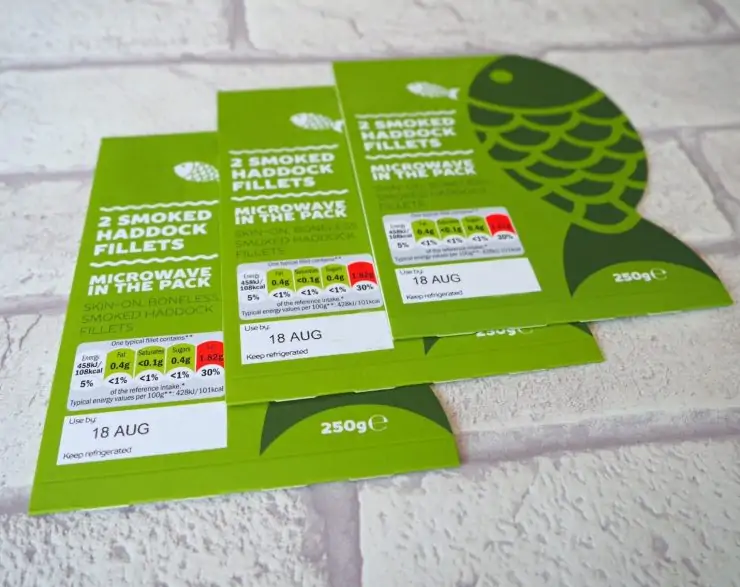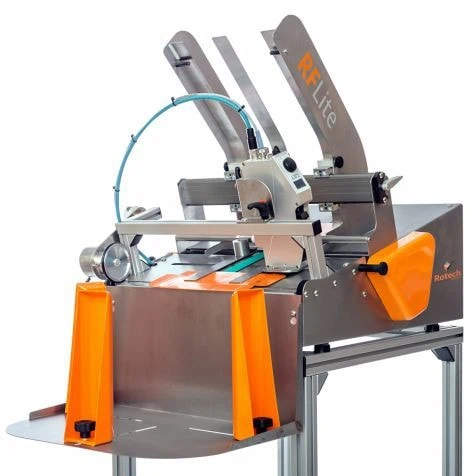Traceability systems needn’t be complicated, thanks to thermal inkjet technology, writes Steve Ryan, UK Sales Manager at Rotech Machines.
Traceability isn’t just a buzzword. It is supply chain transparency that any company operating in the 21st century food industry has to guarantee in order to thrive in an age of exacting consumer and retailer expectations and rising food safety related threats.

Coding and product identification is at the heart of any traceability system and the industry has made huge strides in developing technologies that can assist with track and trace. Some providers are promoting fully networked traceability systems that feed into a company’s ERP system and require complex software, in-line verification and tag-reading capabilities.
Whilst some large UK food manufacturers have embraced these advancements, for many, the cost and complexity of such an approach is overwhelming.
The good news is that you don’t need a sophisticated IT infrastructure and RFID-tagging to demonstrate traceability. If you already have automated, on-line date coding, you probably have all you need for a traceability system. It’s just a case of knowing how to use them.
What codes are needed for traceability?
Food manufacturers are required by law to print ‘use by’ and ‘best before’ codes, although this is more for food safety than traceability. Failure to do so could result in hefty retailer fines and rejected deliveries. There is a legal framework for traceability (Regulation (EC) 178/2002) and the relevant codes for ensuring compliance are real-time production codes or julian codes and batch codes.
It’s also commercially beneficial to know the exact time of manufacture as this allows operators to narrow the window of production in the event of a recall. In factories operating multiple lines, coders can also be programmed to add a line number to packs, limiting the potential scope of the recall. The batch code is the key to tracing the origins of individual ingredients, so, in the event of a food scare, the minced beef in a lasagne, for example, can be traced back to an individual producer or farm.
What coder is needed for traceability?

Thermal transfer (TT) and continuous ink jet (CIJ) are the most common coding technologies for printing traceability information onto food packaging – TT for labels, films and tray lids and CIJ for cartons, sleeves and other rigid packs. TT and CIJ have been around for such a long time that many producers assume that they are the only options. However, in recent years, another contender has emerged in the form of thermal inkjet (TIJ).
For the majority of packaged food products, this cartridge-based technology offers advantages over CIJ and TT in terms of cost, convenience and print clarity, as well as being cleaner and safer for users and the environment.
From a traceability perspective, the print quality delivered by TIJ is a massive benefit. Food factories are increasingly deploying on-line cameras for quality control. These vision systems struggle to read CIJ codes, which are composed of fewer, larger dots per inch than high resolution TIJ codes, which are made up of more, smaller dots. With TIJ, codes of up to 600dpi can be printed and easily read by any camera system. Similarly, CIJ systems can struggle with 2D barcodes, which can be printed with ease on a TIJ system. 2D codes are widely used in the pharmaceutical industry for traceability purposes, and this approach could, in the future, be adopted by the food industry. TIJ also has the advantage of being an open coding platform, in the sense that it doesn’t lock users into an agreement with one supplier through a closed network.
Larger food manufacturers with complex supply chains may prefer to go down the route of investing in database-driven traceability systems. However, smaller and medium-sized operators who find the prospect of traceability daunting should consider whether they really need to go to that expense when they can achieve the same result with a more simple and cost-effective set-up. It is worth bearing in mind, though, that your traceability is only as good as your printer – and for consistent, high quality codes that won’t let you down, TIJ is the safest bet

